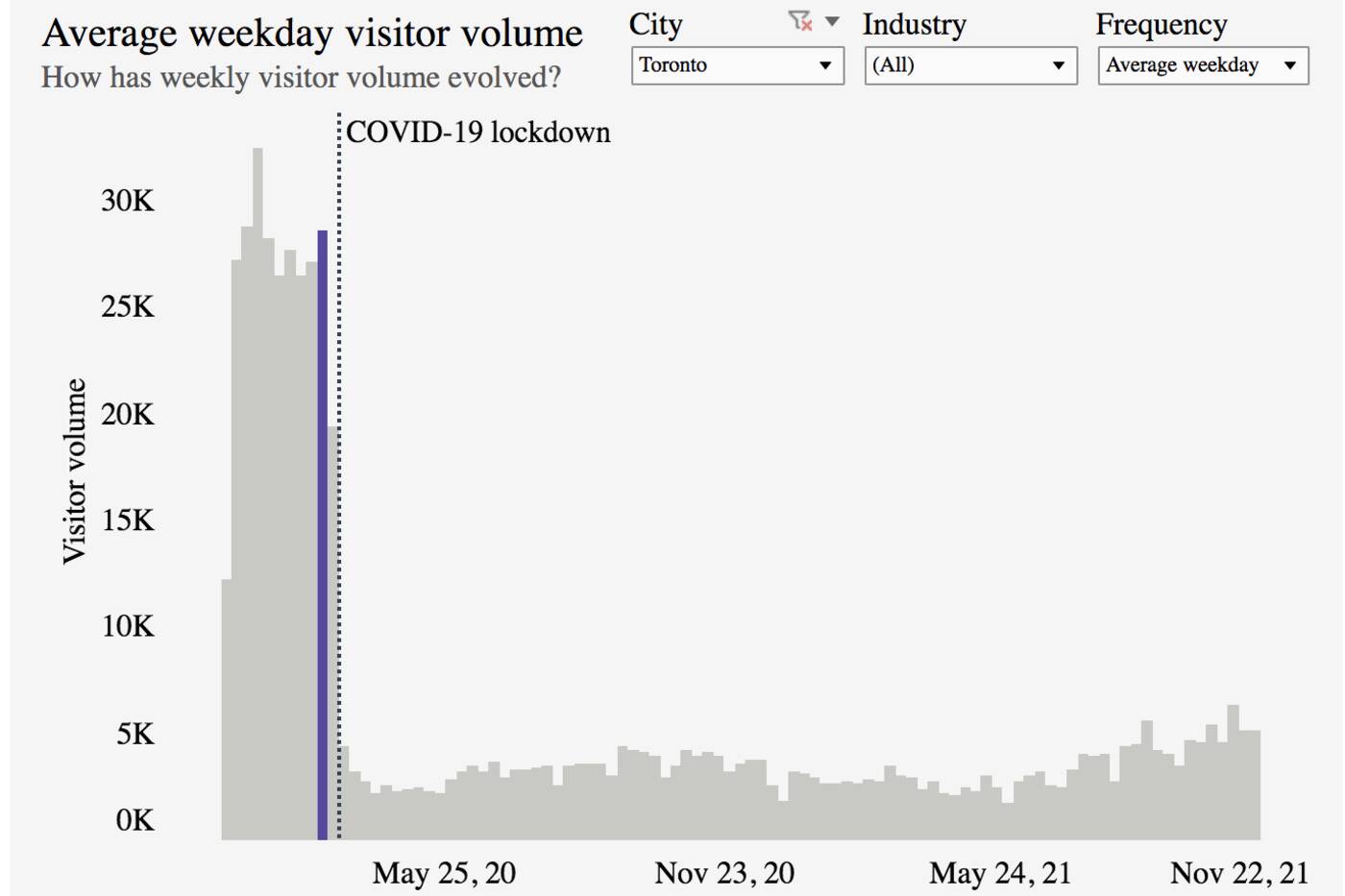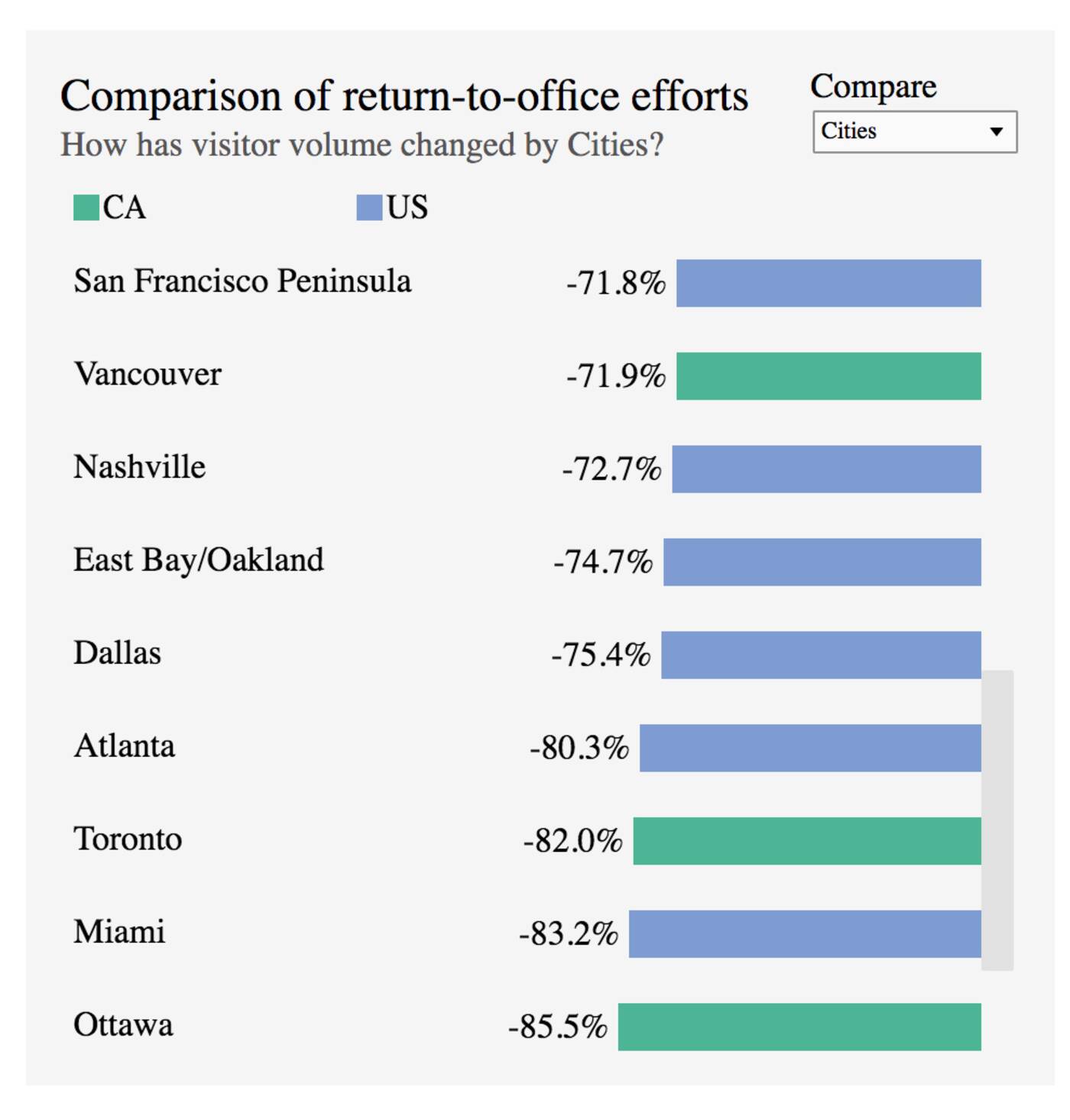
Toronto's empty downtown core is starting to see signs of life again
Downtown Toronto became a ghost town in the early months of lockdown but now things are starting to look up.
The stay-at-home orders had office workers confined to their living rooms and downtown business suffered — shops and cafes in The Path system were particularly hard-hit.
Just a month ago, downtown offices were still mainly empty as the work-from-home trend continued.
But that is starting to change, according to a new report from Avison Young, a global commercial real estate company.
While workers are only slowly returning to offices, foot traffic in downtown Toronto is up by 62 per cent in the third quarter compared to the second quarter of the year, according to the Avison and Young Vitality Index.

The Vitality Index shows how traffic declined right after lockdown in Toronto. Chart via Avison and Young Vitality Index
The Vitality Index uses anonymized cell phone location data geofenced to unique locations, aggregated to estimate total foot traffic in major North America cities. For Toronto, the radius comprises locations primarily between University Avenue to Church Street and Front Street to Dundas Street.
There are also indications that more businesses and employees will come back downtown.
For the second quarter in a row, total available sublet space fell, reaching 6.9 million square feet — down from 7.2 million square feet last quarter, signalling that companies continue to reverse course on shedding space, the Greater Toronto Office Market Report reads.
Fewer buildings have more than 50,000 square feet available: 179 in the third quarter down from 187 in the last quarter.
But downtown availability (12.9 per cent) and vacancy (7.6 per cent) rates ticked upward during the third quarter. However, the rate of increase slowed as it has across the GTA overall.

This chart compares visitor volume declines in North American cities. Via Avison and Young Vitality Index
The report noted increased touring of properties, not only among existing Toronto tenants but also with newcomers to the market.
Another good sign is a return of business to First Canadian Place in Toronto's Financial District, according to Retail Insider.
The following businesses recently signed leasing deals:
- Ma's Best - replaced Soup it Up (to be opened Q4 2021)
- Hazukido – replaced Jugo Juice (recently opened)
- Simple Kitchen – replaced Davids Tea (to be opened Q4 2021)
- Brasa Peruvian – replaced Rocky Mountain Chocolate (to be opened Q4 2021)
- Mean Bao – replaced Prairie Girl Bakery (recently opened)
- Sweetie Pie – replaced Furama (to be opened Q1 2022)
- Zen Kyoto Ramen & Torched Sushi – replaced Brick St. Bakery (to be opened Q4 2021)
- And several existing tenants including Decadent Desserts, Forno Cultura, Forno Cultura Focacceria, and Kupfert & Kim.
Currently, The Vitality Index is showing a steady increase in foot traffic in major cities in the U.S. and Canada but is still trending significantly below 2019 levels, the report reads.
The widespread return in the fall that many hoped for has yet to materialize. In fact, the whole nature of office work has undergone a fundamental shift.
"The definition of the office was changing long before [C*V*D] happened," says Sheila Botting, Avison Young's president of professional services for the Americas.
"[C*V*D] essentially represented the largest change management activity across the globe. Suddenly people realized that they could work anywhere, anytime, anyplace."
Latest Videos
Latest Videos
Join the conversation Load comments







